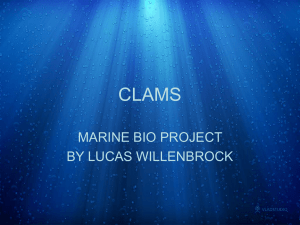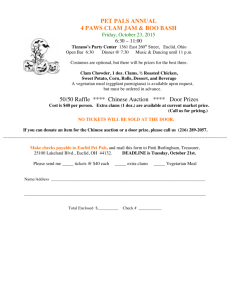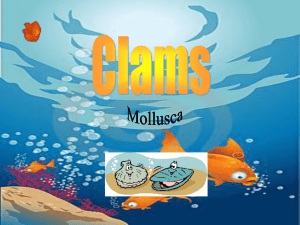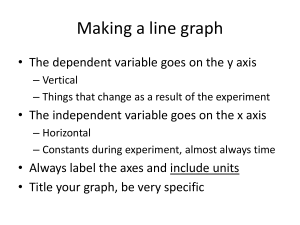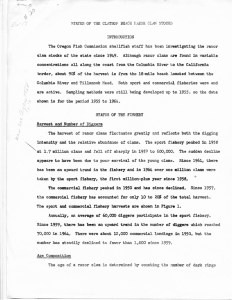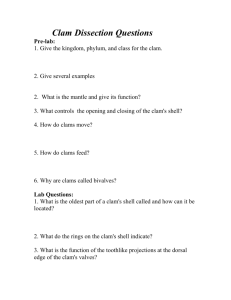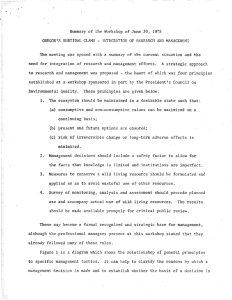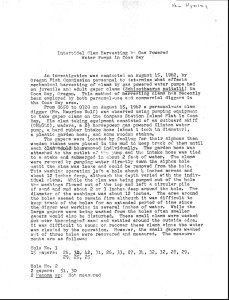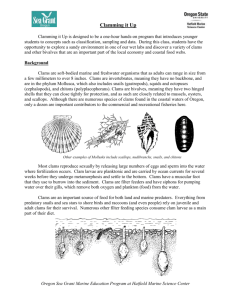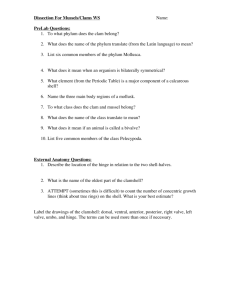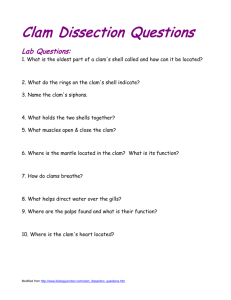Clamys sweetus: Natural Selection & Variations
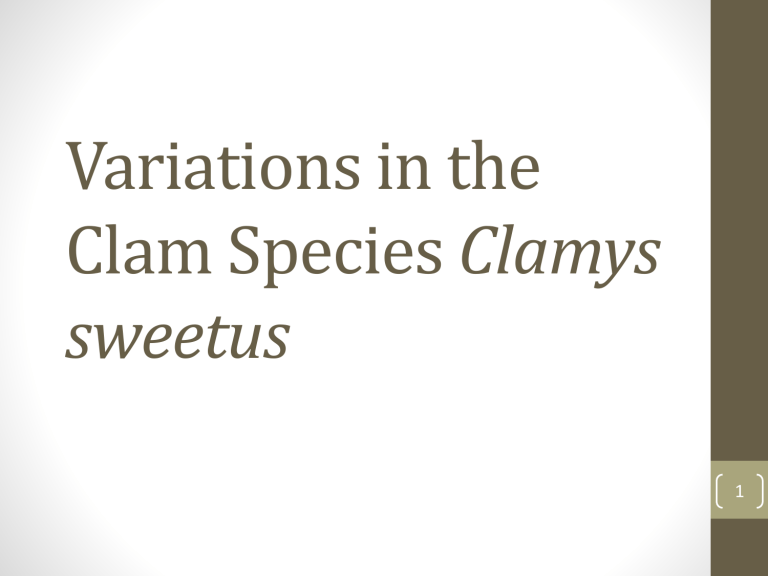
Variations in the
Clam Species Clamys
sweetus
1
Learning Target
• I can describe how natural selection preserves favorable traits
• Create a new title/thread “Clamys sweetus”
• Update your table of contents 2
Entry Task
•
In your notebook, write 5 words or phrases that come to mind when you hear the term “Natural
Selection”
3
Entry Task
• In groups of 4, take turns sharing your lists.
• Describe why you chose each word/phrase.
• Choose two words/phrases to share with the class.
4
What is the role of natural selection in evolution?
Comment on each statement.
Which one do you agree with?
Why?
5
Clamys Sweetus
• Read the Introduction
• Descent with modification: natural selection favors some variations resulting in them becoming more common in the next generation.
6
Clamys Sweetus
• Without opening the bags, and without squeezing the clams, observe the two strains of clamys sweetus.
• Answer #1,2,3 in your packet.
7
Clamys Sweetus
• Read “Observations of Clamys sweetus” p. 2
• Using Chart 1, you will be comparing pairs of clams (1 strain R and 1 strain M) to determine if one clam has a stronger shell.
8
Clamys Sweetus
• Follow Procedures 1-1 thru 1-
6.
• Record your results in Chart 2
(1-7)
• Put your group’s results on the board.
9
Clamys Sweetus
• Using the class data, complete the Analysis section (steps
4,5,6)
• Read “Setting the Scene”
• Answer step 7
10
Clamys Sweetus
• Step 5: Why is it important to use class data and not just the data obtained by an individual team?
Class results are more reliable because there are more trials. A larger sample size leads to increased precision and more accurate data.
11
Clamys Sweetus
• Step 6: Is there a difference in shell strength between the two varieties? Support your answer with data.
12
Clamys Sweetus
• Step 7a: The arthropod is able to crack open only relatively weak clam shells. Which variety might the arthropod seek out as it hunts for food?
13
Clamys Sweetus
• Step 7b: How might this feeding preference affect the numbers of the two varieties in this and future populations of
C.sweetus?
14
Wrap-Up
• What trait was “selected for” in this activity?
• How does this activity relate to our learning target?
• How do you think this learning target fits in with our chapter goal of answering the question “What are the underlying biological mechanisms of evolution?”
15
Exit Ticket
• Complete and return the exit ticket before you leave!
16
Clamys Sweetus Day 2
• We are going to investigate the hypothesis that shell color and hardness are related.
• Follow 2-1 thru 2-3 to gather data
• Put your data on the board.
17
Clamys Sweetus Day 3
• A new color variation of Clamys Sweetus has appeared – Brown
• Formulate a hypothesis about the ability of brown clams to survive predation by the predatory arthropod.
• Design an experiment to test your hypothesis.
• This is very similar to the type of prompt you will see on the EOC!
• Complete #13 and #14 18
Clamys Sweetus Day 3
• Question:
Could the presence of a few brown clams eventually lead to a population that is mostly brown clams?
19
Clamys Sweetus Day 3
• Pocketmouse video
• Does fur color influence which pocket mouse survives and which does not?
• Could the pocket mouse information apply to
C. sweetus?
• What do you need to know to make this decision?
• Video
20
Clamys Sweetus Day 3
Could the pocket mouse information apply to C. sweetus?
If it does, what caused the brown color to appear in the clam population?
Complete the rest of the packet.
21
